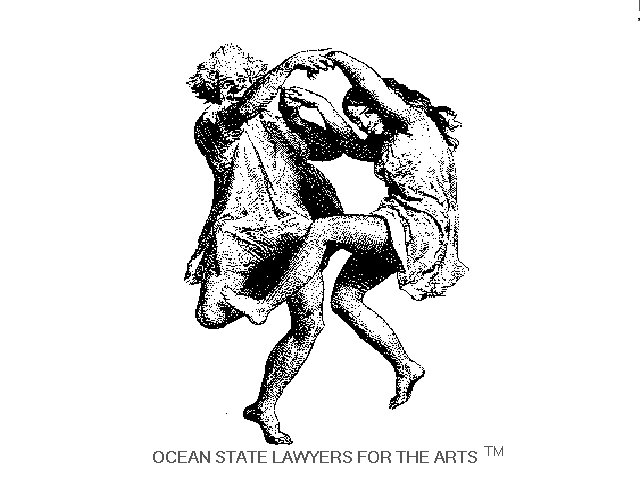
Thanks to the observant eye of one my clients, I have learned that the copyright office has made a decision that could adversely affect the rights of artists and creators working in virtually any media.
Recently, an artist submitted a copyright application to the U.S. Copyright Office to register a series of prints reproduced from her original artwork. Included on the submitted print were her copyright notice (i.e. c 1990 Jane Smith), her signature and, in small print, the method of reproduction, size of the edition and name of the printer. On the application, the artist was named as the sole author and copyright owner.
The copyright office decided, upon their own initiative, that the artist did not own the rights in the reproduced prints and that the printer owned the rights. Once the Copyright Office realized that the reproductions had not been printed by the artist herself, it concluded that the printer's contribution added sufficient originality to make the reproductions derivative works.
It is my understanding that this decision is based upon the law as follows:
1. Only the copyright owner can make or authorize others to make derivative works-new works based upon the owner's original works;
2. The artist in this case was the copyright owner and she contracted with the printer to make the reproductions or her work;
3. The reproductions were new derivative works created by the with the original owner's consent.
4. Therefore, despite the intent of the parties, the printer created new derivative works with the artist's consent and the printer was the sole owner of the copyright in the reproductions.
The artist in this case had the option of suing the copyright office, joining the printer as co-defendant, in order to determine her rights, against the ruling of the Copyright Office. Unfortunatley, such an action would have been time-consuming and expensive. Instead, the artist chose the simpler route of having the printer assigns all the rights in the reproductions back to her, in writing.
After learning of these bizarre events, I contacted the copyright office. Apparently, this ruling was made by the Visual Arts Division of the Copyright Office with regard to this particular copyright registration. A representative of that division explained that a printer who produces lithographs, serigraphs, or even posters may contribute sufficient originality to give rise to a derivative work to which the printer the printer would own the rights. Especially, when the printer's name appears on the reproductions. On the other hand, color photocopying would probably not constitute new derivative works. He did not say how much contribution would cross the line. Therefore any artist who does not do his/her own printing must get the printer to assign and release all rights in any reproductions back to the artist. Such an assignment should also be noted on the copyright application submitted by the artist.
Although this ruling was made by the Visual Arts Division, It is my opinion that other artists, musicians, playwrights, choreagraphers, etc. must understand that their rights to reproduction of their work are also in jeapordy. If a musician, or a group, wants to record performances of compositions, it is possible that, if the musician does not do his own production and/or mixing, etc., the recording studio could end up with all the rights in the recordings. Handling the mixing board alone could constitute sufficient contribution to create the studio's rights.
The same goes for videographers who record a choreagrapher's dance or a playwright's theatrical production. The only way to avoid a transfer of rights is to do the reproduction yourself, have the person doing the reproduction be an employee making the reproductions works-for-hire or have the rights assigned back to you. Such assignment should be agreed to, in writing, at the time of hiring the person or company reproducing your works. Otherwise, the other party may attempt to extract additional payments from you to assign the rights.
First Published Version, copyright 1993 David M. Spatt
THIS WEBSITE CANNOT BE USED AS A SUBSTITUTE FOR SOUND LEGAL ADVICE FROM A COMPETENT ARTS OR ENTERTAINMENT ATTORNEY. In the event of a legal problem or question, specific legal consultation is advised. This website is intended only as a means of educating arts organizations and artists of all disciplines as to their potential legal rights and liabilities. The information provided is made available with the understanding that neither OSLA nor the office of David M. Spatt is engaging in the rendering of legal counsel.
copyright 1997 David M. Spatt, All rights reserved
Reproduction is prohibited without the express written consent of the author

|
|